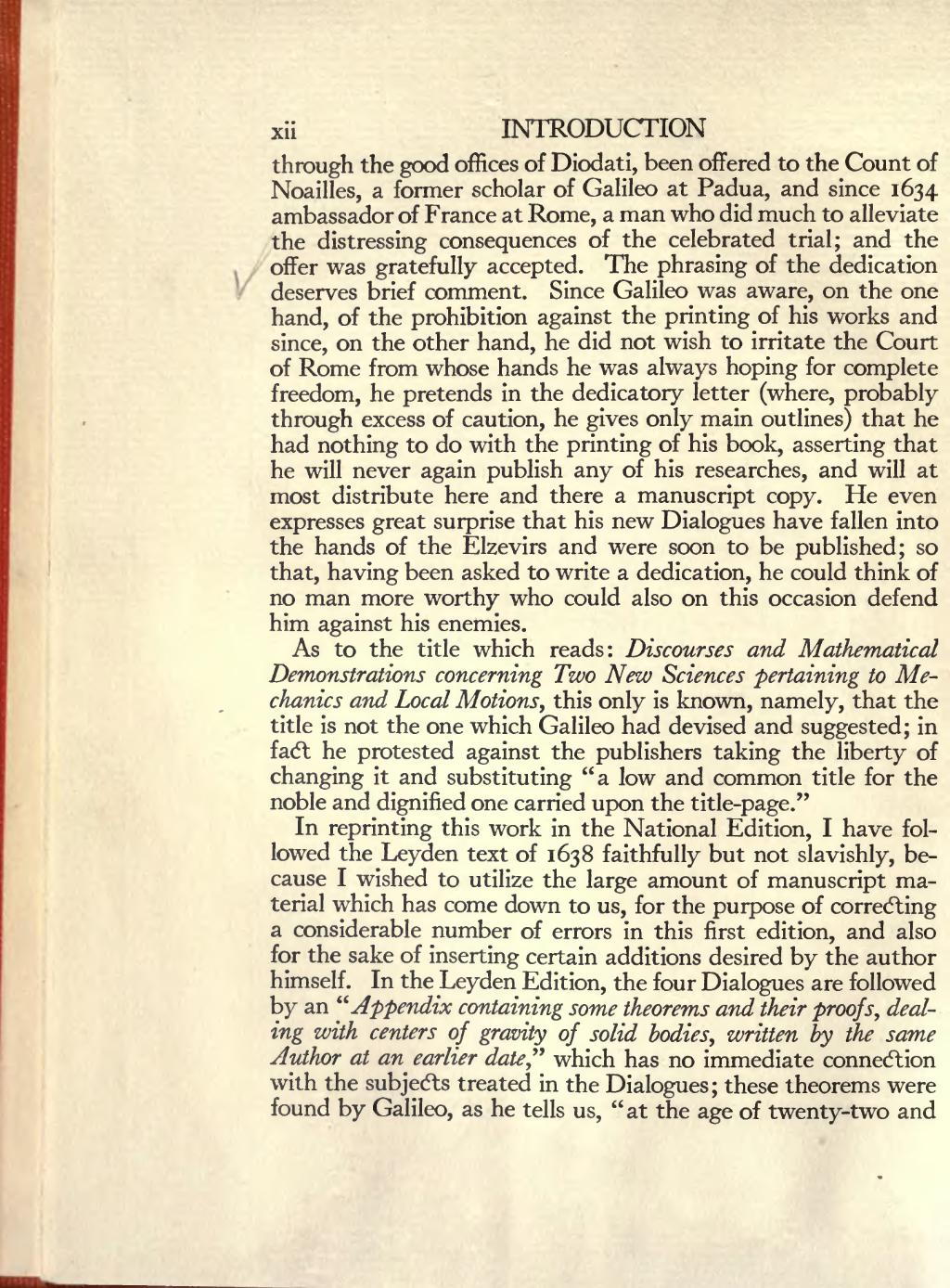through the good offices of Diodati, been offered to the Count of Noailles, a former scholar of Galileo at Padua, and since 1634 ambassador of France at Rome, a man who did much to alleviate the distressing consequences of the celebrated trial; and the offer was gratefully accepted. The phrasing of the dedication deserves brief comment. Since Galileo was aware, on the one hand, of the prohibition against the printing of his works and since, on the other hand, he did not wish to irritate the Court of Rome from whose hands he was always hoping for complete freedom, he pretends in the dedicatory letter (where, probably through excess of caution, he gives only main outlines) that he had nothing to do with the printing of his book, asserting that he will never again publish any of his researches, and will at most distribute here and there a manuscript copy. He even expresses great surprise that his new Dialogues have fallen into the hands of the Elzevirs and were soon to be published; so that, having been asked to write a dedication, he could think of no man more worthy who could also on this occasion defend him against his enemies.
As to the title which reads: Discourses and Mathematical Demonstrations concerning Two New Sciences pertaining to Mechanics and Local Motions, this only is known, namely, that the title is not the one which Galileo had devised and suggested; in fact he protested against the publishers taking the liberty of changing it and substituting "a low and common title for the noble and dignified one carried upon the title-page."
In reprinting this work in the National Edition, I have followed the Leyden text of 1638 faithfully but not slavishly, because I wished to utilize the large amount of manuscript material which has come down to us, for the purpose of correcting a considerable number of errors in this first edition, and also for the sake of inserting certain additions desired by the author himself. In the Leyden Edition, the four Dialogues are followed by an "Appendix containing some theorems and their proofs, dealing with centers of gravity of solid bodies, written by the same Author at an earlier date," which has no immediate connection with the subjects treated in the Dialogues; these theorems were found by Galileo, as he tells us, "at the age of twenty-two and

